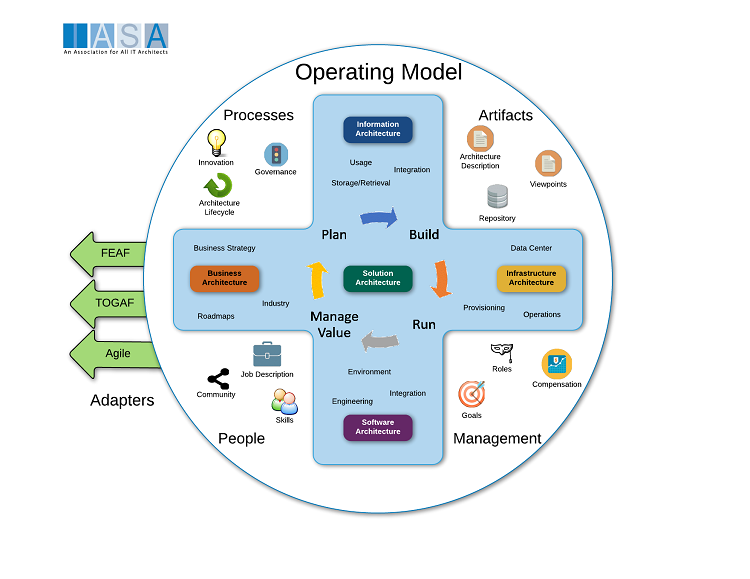The components of an engagement model are the actual things that architects work with to achieve their objectives. Components are
Typical Engagement Touchpoints
The following section outlines the typical engagement touchpoints via a set of typical lifecycles or processes that exist in most organizations. The assessor should use this as a guide to ensure coverage of engagement; however the naming and specifics that relate to each individual organization mean that the assessor should seek to understand areas where gaps exist or where processes are hidden.
Organization Engagement Entry Points
In order to effectively add value to an organization architecture efforts need to be embedded in an organizations existing cycles and processes. The following section describes the areas where architects need to engage in organization.
| Strategic Planning | Ensure the organization strategy is being formulated to ensure most value can be derived from current and future technology |
| Business Planning | Ensure that tactical and operational objectives for the period of the plan can be achieved in a way that derives most value from technology investments while factoring in architectural concerns & constraints |
| Architecture Advisory | Ensure that proposed solutions are best aligned with business outcomes; ensure advisory requesters have a clear understanding of existing capabilities to optimise reuse opportunities and ensure well-governed architecture delivery |
| Architecture Review | Ensure that reviewed architectures are consistent with the current governance and policy, issue waivers when required, request governance updates as identified |
| Architecture Communication | Ensure that architecture successes & activities are clearly and consistently articulated to business and technology personnel |
| Program Management | Identify & ensure that significant architecture requirements are identified and architecture plans are factored into organization programs |
| Project Management | Identify project level architecture considerations and prioritize accordingly, work with project teams to identify appropriate approach and delivery processes and procedures (e.g. ALM) |
| Project Risk Management | Identify significant architectural risk, record, report and manage |
| Demand Management Planning | Collaborate with program management, relationship management and business groups to assess and plan for demand |
| Portfolio Prioritization | Develop/Review business cases to ensure optimal investment mix is selected that will deliver most value to organization |
| Technology Adoption Lifecycle | Identify, track, evaluate and translate future technology for organization |








